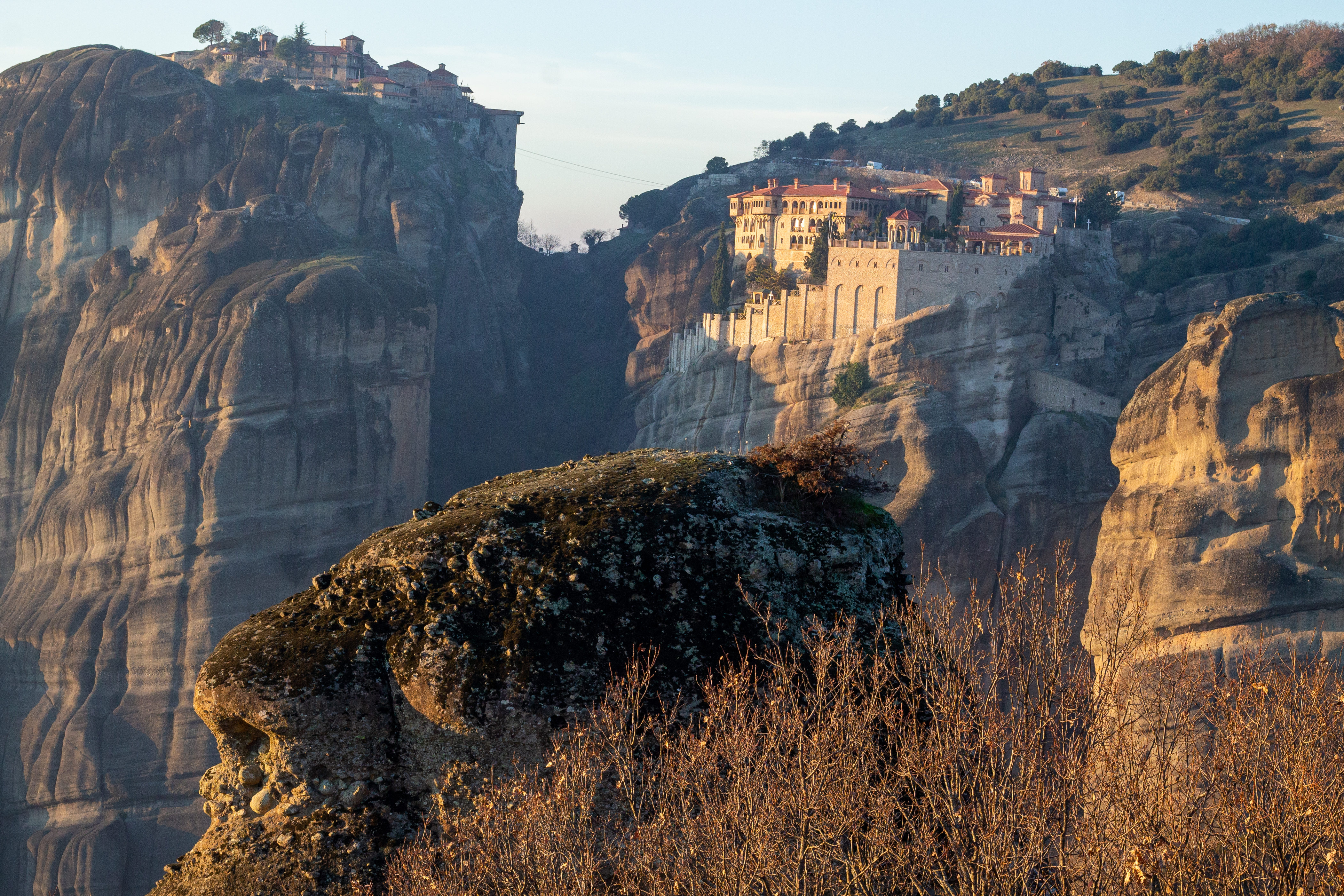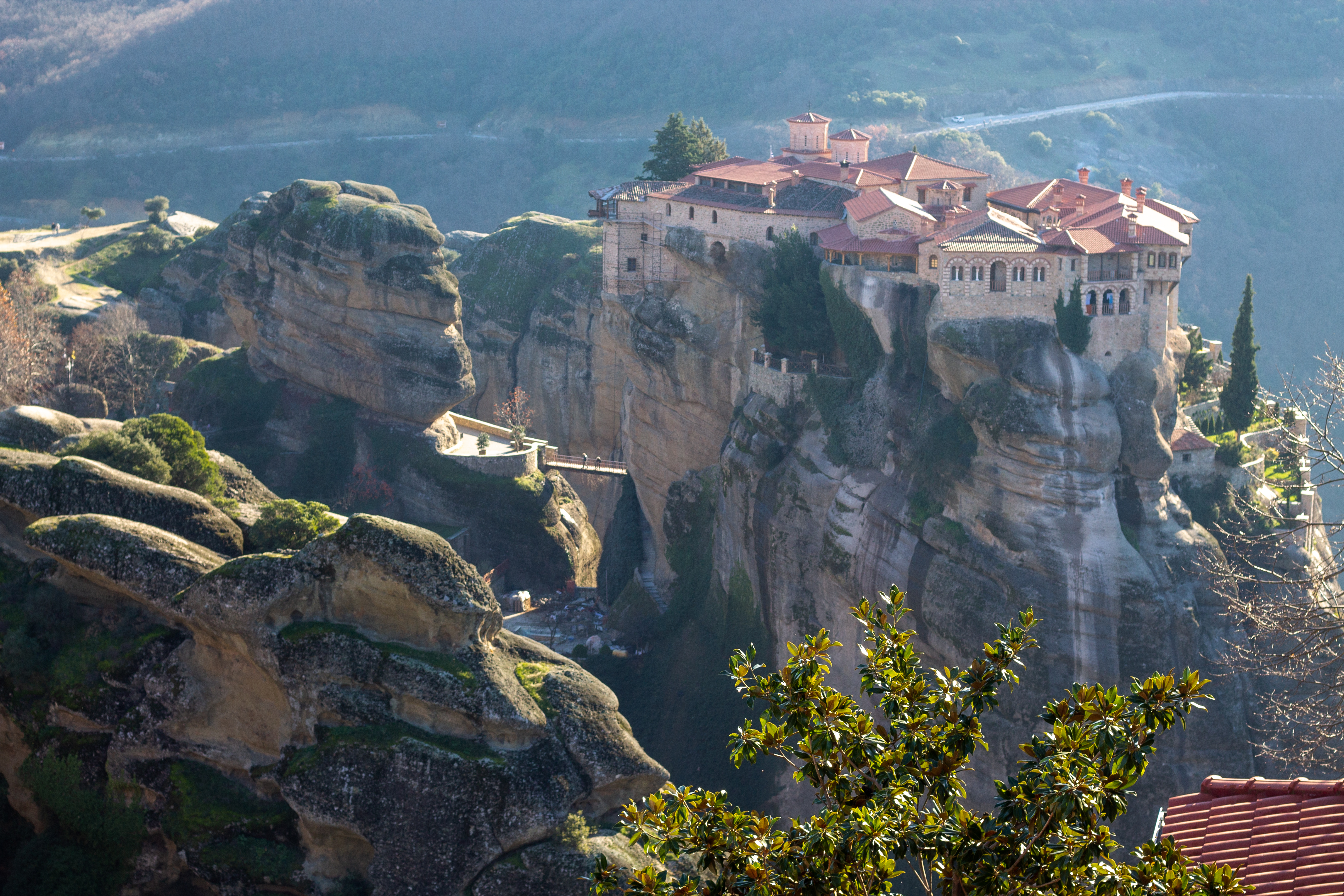The monasteries of Meteora are in Meteora. Meteora is the name of a rock formation in central Greece about 350km (220 miles) or around a 4-hour drive from Athens and is famous for its monasteries perched atop immense stone pillars.
The Monasteries
Today, there are only six remaining monasteries out of twenty-four that used to exist. They date back to the middle of the 14th century when monks from Mount Athos (the holy mountain) arrived after fleeing from the Ottomans. Around 1340, one monk, Athanasios founded a monastery what is now known today as Great Meteoron. He introduced the region to the essence of cenobitic monasticism, and called “Meteoran” the broad rock where he founded the monastery, which would become the name for the entire cluster of rocks. Gradually, most of the rocks became inhabited. In the 19th century, they fell into a kind of disrepair and they weren’t restored until the early to mid-20th century with restoration work continuing to this day. While they are old, what you see mostly is not. New construction is clearly visible and while beautiful, they feel too polished. However, they do have amazing views. I could almost imagine god’s reverence in the extreme altitude, isolation and expanse of nature in the valleys below and mountains in the distance. Perhaps, if I lived in the 14th century, I’d to be drawn to the life of a monk.
Visiting the Monasteries
Coming from the town, it seems almost impossible that there is a road that leads to the monasteries. They seem impossibly high, but there is a single two-lane road that winds it way up to them. In the valley below, there are two towns, Kastraki and Kalampaka. Our hotel was in Kalampaka and it was about a 12-minute drive to about the middle portion of the top where there was a beautiful lookout point. It is where we watched the sunset our first night and the sunrise the following morning. The layout of the monasteries is like a squiggling line, where at the left end is Great Meteoron and the right end is St. Stephan with the monasteries Varlaam, St. Nikolaos, Rousanos and the Holy Trinity at Meteora in between. Along the road are little extensions big enough to park a car so that you can stop and lookout, or as there are no rules in Greece, you can park and stop where ever you want. Our first evening, we were able to visit two of them and just catch the sunset. The next morning we watched the sunrise and visited Great Meteoron and Varlaam. We didn’t go to St.Nikolaos or Rousanos because they are the smallest, but they are also perched significantly lower, so they don’t have as great of a view as the others. Seeing them was amazing. Just catching them at the different viewpoints and heights at different times of day was completely worth it.








Pingback: Endless Archeology and Monuments – Journeyman Joe
Great shots Joe 👌🏼
Thanks Timmy! I think they’re some of my best